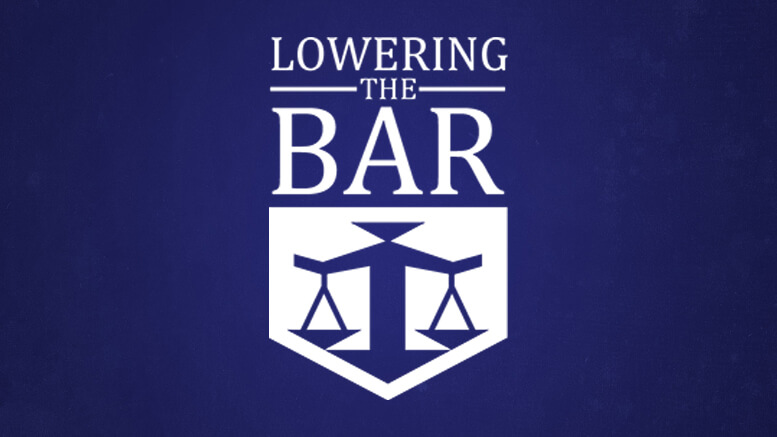From the opinion in People v Deer, decided March 19 in St. Lawrence County, New York:
[Border Patrol Agent] Carrier on cross examination said the reasons he stopped the vehicle were that the driver had both hands on the wheel with her arms extended, that she sat pushed back in the seat, that she swerved once in the lane during 6 miles of following her (at times close enough to read her license in an unlighted area) and she did not pass a slow moving vehicle when, in his opinion, she might have.
The agent believed that these facts indicated the driver was "nervous" about something, partly because, in his professional opinion, "most drivers had either one hand on the wheel or appeared more relaxed if they had two hands on the wheel." He didn't say whether all these drivers also had a police car (or an unknown vehicle) right behind them when he made these prior observations.
Oh, there was also this evidence: "When he saw [the defendant] sitting in the car, he testified, he knew from looking at her that she had physical attributes consistent with someone who was Mohawk." According to the opinion, there in fact a Mohawk reservation in the area, and the name "Deer" is a common Mohawk name. So under a totality-of-the-circumstances test, it would appear that there was reason to suspect the defendant of driving while Mohawk.
Problem is, that isn't illegal, nor does it justify a stop. That takes (at a minimum) "reasonable suspicion" even where a vehicle is concerned. "Roving patrol stops" are sometimes allowed without it, but for obvious reasons those are "usually constitutionally suspect" and authorized only "as a last resort, under narrow circumstances." The court held that here the stop was unreasonable even under the more lenient test, because innocuous behavior alone will not justify a search, even if you add up a bunch of innocuous behaviors. (Adding race to the mix doesn't help.)
Here are some facts the court listed as not contributing to reasonable suspicion, based on New York cases:
- driver/passenger turning his head
- driver/passenger looking back and forth
- passenger leaning into the front seat
- passenger slouching in the back seat
- officer believes occupants are "up to no good"
- occupants look Hispanic
- occupants look like Arabs
Even if you had all that going on in the same car, the court implied, it still wouldn't add up to reasonable suspicion. Same goes for "looks like a Mohawk," "drives with both hands on the wheel," and "didn't pass when she could have." (Although that last one is irritating.)
The officer did also testify that this happened in a county that borders Canada (the reservation is in both countries) and that it was on or near Route 11, which he said was a known smuggling "corridor." But the court held, I think correctly, that unless it's okay to suspect everyone in the county or on that road—and it isn't—this still isn't enough. The stop was illegal, the court held, because the driver's "actions were completely consistent with [those of] a person who was not engaged in any criminal activity."
Notwithstanding the fact that she absolutely was engaged in criminal activity.
I mean, of course she was. Why do you think there's a court opinion? Not only was she smuggling (or at least possessing) pot, she had 23 pounds of it inside her spare tire, for God's sake. So the agent's hunch was 100% correct! But this is actually an important point: that is irrelevant. The system is designed to deter stops (searches, arrests, drone attacks, whatever) carried out on "hunches," even though this necessarily means some guilty people will get away with whatever no good they're up to. That's the price of a system that doesn't trade away all its freedom for security.
I would support a constitutional amendment to require people to pass slow-moving vehicles when they can, or actually let's get slow-moving vehicles the hell out of the left lane. Until then, I may hate what they do but I will defend their right to do it.
Source: the Newspaper.com, via Radley Balko.
